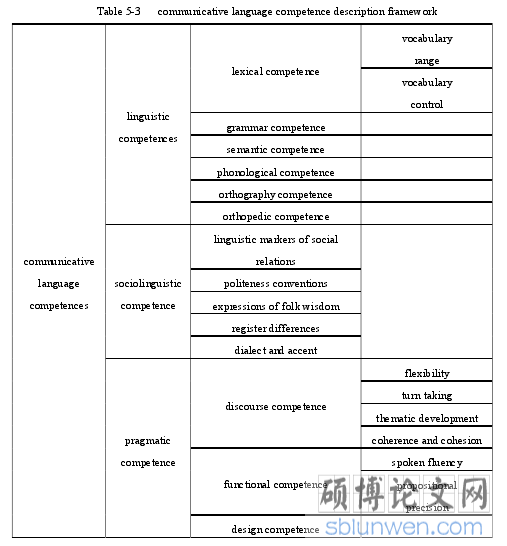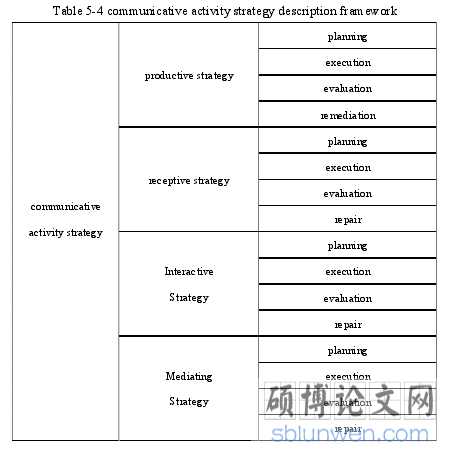Chapter 1 Introduction
1.1 Research Background
Language proficiency scale or the language proficiency standards is a standard, a reference point, and basis for assessing the language competence of language users and it is used to describe the competence that individuals use language to complete a series of tasks including language task (Yan, 2007). Language proficiency scale is a series of descriptions of language users’ competence that users used some kinds of languages (Han, 2006). Usually, each scale is consisted of several different levels which line vertically from low to high describing different stages of language competence development (Han, 2006); Lambert (1993) pointed out that an unified language proficiency scale played an important role for a state to draft a policy of foreign language learning and language use. Language proficiency scale may provide not only an identical standard for language assessment but also a reference for language learning and language teaching (Liu, 2017). Language proficiency scale reflects the latest developments in linguistics, applied linguistics, and pedagogy, and it plays an important role in language teaching, learning, and assessment.
In order to unify and standardize the test standards of the national language competence, many countries and regions including the United States, Canada, Australia, and Europe have conducted long-term research on the language proficiency scale, and have developed a lot of language proficiency standards such as American Interagency Language Roundtable Scale (ILR), American Council on the Teaching of Foreign Languages (ACTFL Standard), Canadian Language Benchmarks (CLB),International Second Language Proficiency Ratings (ISLPR), Association of Language Testers in Europe (ALTE) and Common European Framework of Reference for Languages: Learning, Teaching, Assessment (CEFR). Among these language proficiency scales, CEFR and CLB are the most influential ones around the world (Han, 2006).
........................
........................
The purposes of the comparative study of language competence framework in CEFR and CLB are listed as follows:
1) Discuss in depth the definition and connotation of language competence in CEFR and CLB, the theoretical rationale for language competence, and the language competence description framework; and 2) provide a deeper understanding of the two language proficiency scales and their relationship with language teaching, learning, and assessment.
The research may contribute to a further understanding of the theoretical rationale for the language competence in the two language competence frameworks, and of the referential role of the description framework of language competence in English teaching, learning, and assessment.
..........................
Chapter 2 Literature Review
2.1 The Definition of Language Competence in CEFR and CLB
At present, the academic circles have elaborated on the definition of language competence ability in CLB, the composition and theoretical model of language competence. The research of the above two aspects are as follows:
2.1.1The Definition of Language Competence/Ability
Liu, Mu & Wang (2017) pointed out that the European Council, on the basis of communicative language models (Bachman, 1990; Bachman & Palmer, 1996;Celce-Murcia et al., 1995) defined language competence in CEFR as general language proficiency which included language use and communicative competence.
As for CLB, Shi (2013) held that the competence and knowledge referred to language users’ understanding of language, and language ability was the ability which learners and users strategically used language to communicate with each other.
2.1.2 The Composition of Language Competence and Its Theoretical Model
In terms of the composition of communicative competence in CEFR, Fu (2009) pointed out that the communicative competence in CEFR included the learner’s basic individual competences and the learner’s communicative language competences. The learner’s individual basic competences were the basic competences that an individual needed to perform a variety of behaviors, including language competences. CEFR further refines individual competences into knowledge, skills and know-how, existential competence and ability to learn; communicative language competence was composed of three components: linguistics, sociolinguistics and pragmatics. CEFR no longer regards listening, speaking, reading and writing as the four abilities of the foreign language teaching tradition, but as the specific implementation behaviors of language decoding and coding process of the language reception and language production in the communicative activities.
..........................
2.2 The Theoretical Rationale for Language Competence in CEFR and CLB
The theoretical rationale for language competence is an important part of the language proficiency scale, and the research on it helps learners understand the connotation of the various components of language competence.
2.2.1 Theoretical Framework of Language Competence in CEFR and CLB
As for language competence framework in CEFR, Liu, Mu & Wang (2017) pointed out that the European Council, on the basis of communicative language models (Bachman, 1990; Bachman & Palmer, 1996;Celce-Murcia et al., 1995) defined language competence in CEFR as general language proficiency which included language use and communicative competence. Language use included language activities and strategies. Communicative competence included general competence of an individual and communicative language competence. Communicative language competence included linguistic competence, sociolinguistic competence, and pragmatic competence, which constituted the general language competence framework in CEFR. Different from the communicative language competence model proposed by Bachman, Celce-Murcia et al., the most prominent characteristic of general language proficiency framework in CEFR was that the communicative activities and communication strategies were classified into language use, and the communicative competence was divided into general competence of an individual and communicative language competence. Language use and communicative competence are inter-related and mutually influential. Language use relied on communicative competence, and communicative competence developed by language to be used.

..........................
Chapter 3 Definition and Connotation of Language Competence in CEFR and CLB.... 19
3.1 Definition and Connotation of Language Competence in CEFR............................... 19
3.2 Definition and Connotation of Language Ability in CLB.......................................... 22
3.3 A Comparison of Language Competence in CEFR and CLB.................................... 23
Chapter 4 Theoretical Rationale for Language Competence in CEFR and CLB............ 26
4.1 Theoretical Rationale for Language Competence in CEFR...................... 26
4.1.1 Communicative Competence ............................... 26
4.1.2 Language Use............................... 29
Chapter 5 The Language Competence Description Framework in CEFR and CLB... 37
5.1 Language Competence Description Framework in CEFR............................. 37
5.2 Language Ability Description Framework in CLB................................ 41
5.3 A Comparison of Description Framework in CEFR and CLB. ................................. 41
Chapter 6 Implications of CEFR and CLB for English Practice
6.1 Implications for English Teaching and Learning
In recent years, more researches have been conducted on CEFR in practice than CLB, but most researches remain at the stage of theoretical exploration. There are few reports on the application of CEFR in specific teaching, including curriculum setting and teaching methods.
6.1.1 Implications of CEFR for English Teaching and Learning
1) In terms of pedagogy, teaching institutions can develop communicative teaching methods based on the theoretical rationale for CEFR. For example, general method can be used.
First, directly placed in the real second language use environment; second, directly placed in the processing and adapting language use environment, in which the step-by-step language activities include oral and written patterns; third, directly participating in the second language interactive communication activities; fourth, participating in the task designed and formulated for a second language use which refers to conducting introduction, explanation, mechanical exercises and application activities in a second language; and fifth, with the help of teachers, carrying out a variety of individual or group practice activities in an organized, planned, targeted, and evaluative manner and adjusting the activities according to interaction to meet the needs of different learners (Council of Europe, 2001).
2) In terms of teaching and learning goal, teaching institutions can adjust the goals of teaching and learning according to the language proficiency scale.
The learning objectives and levels reflect the characteristics of foreign languages learning. Therefore, different teaching objectives can be divided according to the language proficiency scale.

...........................
Chapter 7 Conclusion
7.1 Summary of the Study
Through the respective comparisons of language competence or ability, their theoretical rationale, and their description frameworks in CEFR and CLB, the thesis presented the conclusions as follows.
The language competence in CEFR is general language proficiency, which is the competence of learners or users to use the communicative competence to strategically complete tasks including language communicative tasks. It includes language communication activities and strategies, general competence of an individual, and communicative language competence. Language ability in CLB is the language users or learners’ ability to use language to communicate, concerning interacting, expressing, translating, negotiating and creating discourse in different social environments and contexts. Language ability in CLB includes language knowledge and strategic competences. Language knowledge is consisted of organizational knowledge and pragmatic knowledge, the former of which is divided into grammatical knowledge and discourse knowledge while the latter functional knowledge and social language knowledge.
The theoretical rationales for CEFR and CLB both originated from communicative language ability models. General language proficiency in CEFR not only adopts the CLA, but also has its innovations including communicative activity competence, general competence of an individual, plurilingual competence, etc. While language ability in CLB adopts the CLA, including language knowledge and strategic competence. The learners’ ability of listening, speaking, reading and writing is reflected by language competence.
reference(omitted)
